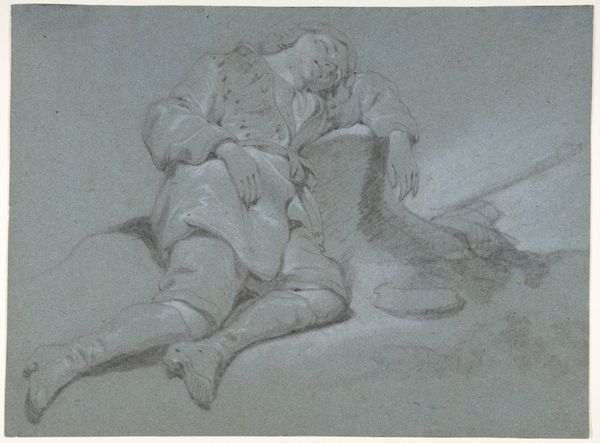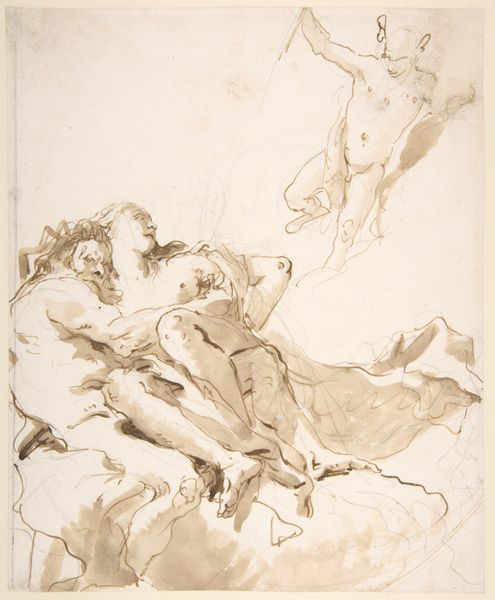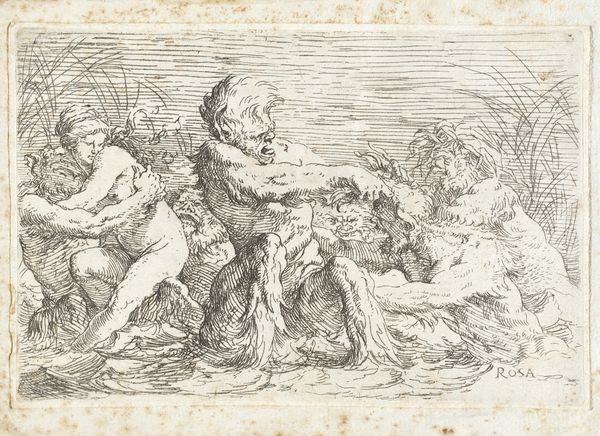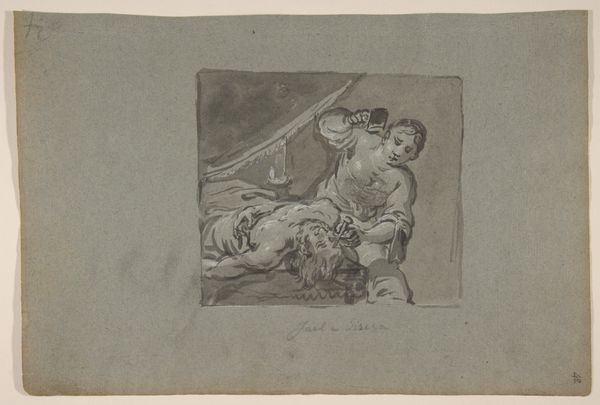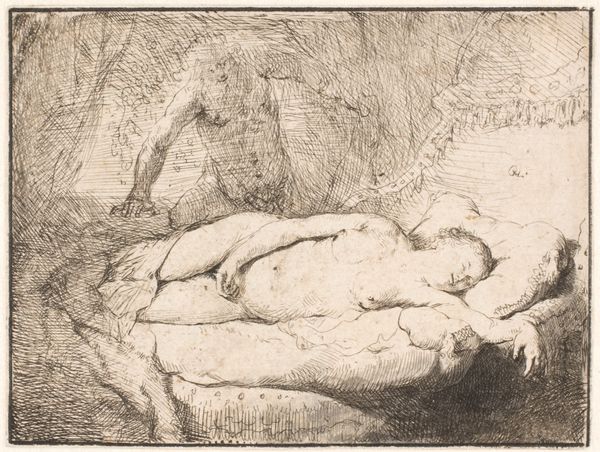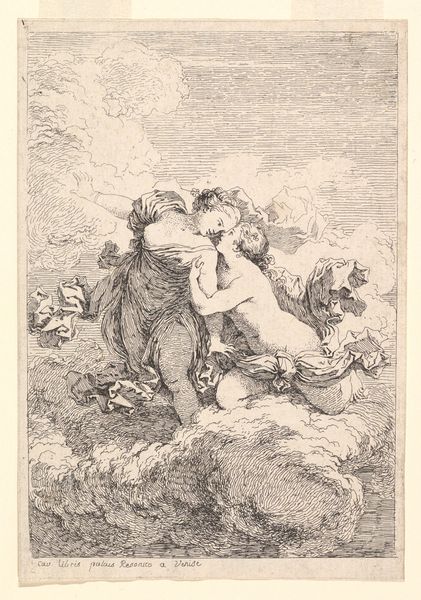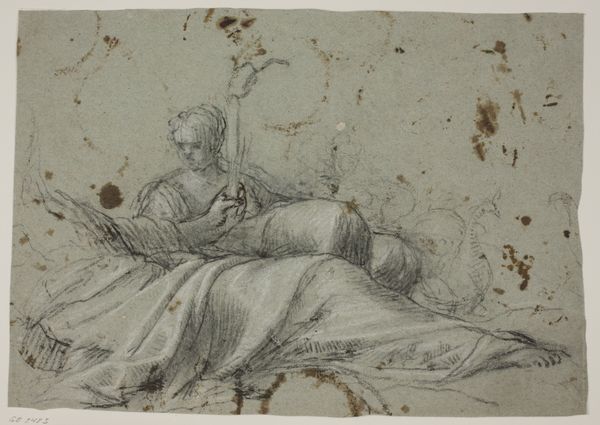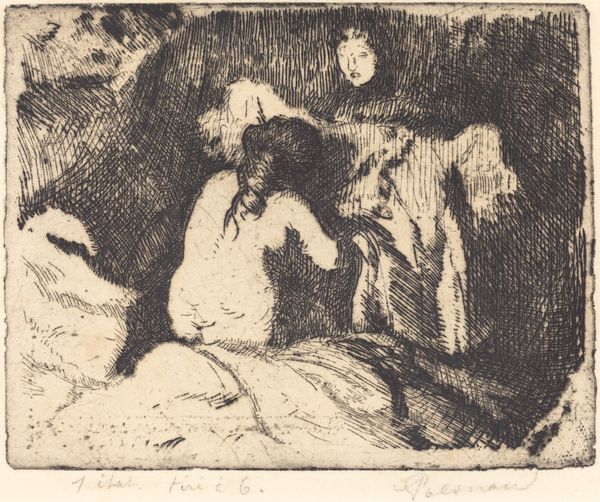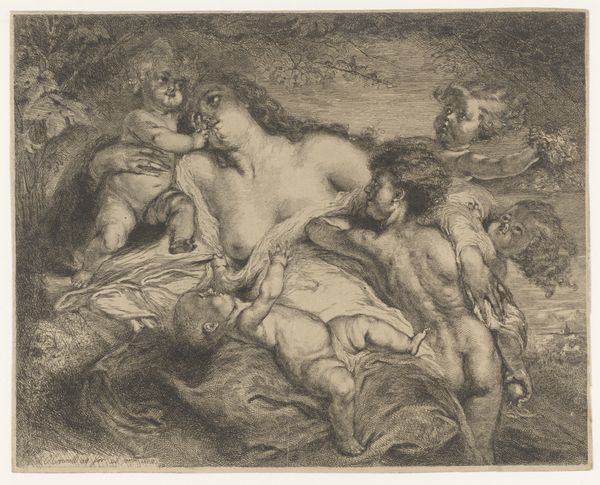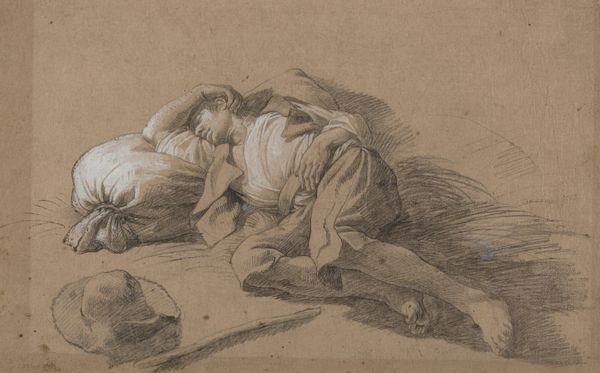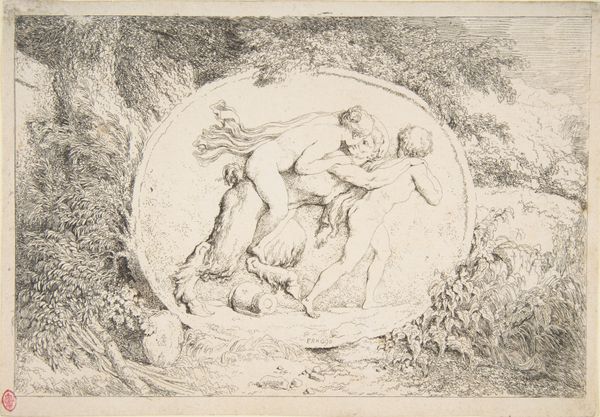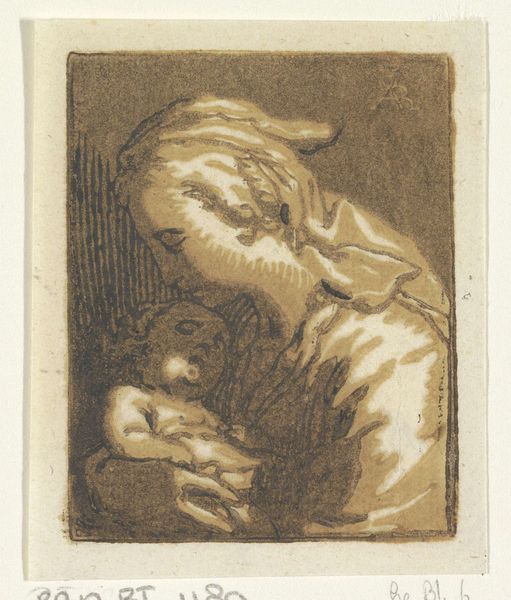
print, etching, engraving
#
neoclacissism
#
allegory
# print
#
etching
#
figuration
#
engraving
Dimensions: plate: 5.7 × 9.2 cm (2 1/4 × 3 5/8 in.) sheet: 10.1 × 15 cm (4 × 5 7/8 in.) (irregular)
Copyright: National Gallery of Art: CC0 1.0
Editor: Here we have Pierre Lacour the Elder's "Venus and Cupid," an etching and engraving from 1780. The lines are so delicate, and it has this dreamlike, almost ethereal quality. How do you interpret this work? Curator: This piece speaks volumes about the era's ideals and its complex relationship to the female form. In the late 18th century, depictions of Venus, like this one, were rarely just about beauty; they were entangled with power dynamics and social expectations. Notice how Venus isn't just passively receiving Cupid's affection; she is actively engaging, almost embracing him. How does that make you feel about its representation of the female agency at the time? Editor: It's true, there’s definitely more agency here than I initially saw. I guess I expected a more… passive figure. Curator: Exactly! Consider the rise of Neoclassicism. While it sought to emulate the virtues of antiquity, it often reinforced patriarchal structures. Examining art like this allows us to question how revolutionary ideals intersected—or clashed—with existing social norms around gender and power. Do you see how this can reveal interesting paradoxes in art and society? Editor: I see what you mean. So, it's not just about what’s shown, but also about what it implies about women's roles back then. Thanks, that's definitely changed how I look at it. Curator: Precisely. It's about using art history as a lens to examine the complexities of identity and social justice, then and now. It's about understanding art not in isolation, but in conversation with broader socio-political narratives. Editor: This has been really eye-opening. I’m walking away with a much deeper appreciation of this piece!
Comments
No comments
Be the first to comment and join the conversation on the ultimate creative platform.
